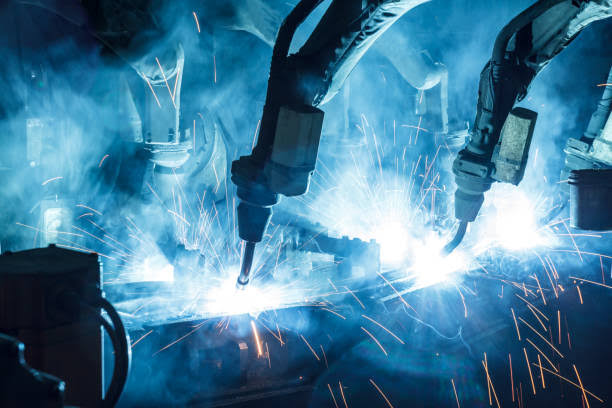Traditionally, the manufacturing industry has regarded robotic machine tending as a challenging and intricate task. The process of automating the loading and unloading of CNC machines requires significant expertise and experience. Consequently, many businesses have been hesitant to embrace machine tending due to perceived complexity and the high costs associated with acquiring specialized equipment.

However, in recent years, the landscape of machine tending automation has undergone a remarkable transformation, becoming considerably more accessible and user-friendly. The introduction of collaborative robots, also known as cobots, has played a pivotal role in simplifying the implementation of automated machine tending. Furthermore, the emergence of robotic application kits has further streamlined the process, eliminating the need to grapple with the intricacies of robotic technology.
Today, achieving machine tending automation no longer necessitates a deep understanding of complex robotics. With a grasp of the fundamentals, businesses can confidently embark on their automation journey, empowered by the newfound simplicity and ease of use offered by modern advancements.
Reasons Why Machine Tending Automation is More Accessible Than Ever Before
Simplified Robotic Technology:
The continuous advancements in robotic technology have significantly simplified machine tending automation. Previously considered complex and restricted to those with robotics expertise, robots have become remarkably user-friendly, enabling even machinists without prior robotics knowledge to operate them.
Seamless CNC Machine Integration: Conventional machine tending solutions often required extensive customization and intricate programming, particularly when interfacing with older machines not designed for automation. However, modern automation solutions, such as the Robotiq Machine Tending Solution, offer non-invasive integration, allowing seamless interfacing with almost any CNC machine.
Streamlined Robot Programming:
In the past, robot programming was perceived as a challenging task that demanded extensive experience. However, programming robots for machine tending tasks has become easier than ever. Robotic application kits now provide programming wizards that automate complex programming tasks, simplifying the process for users.
Plug-and-Play Application Kits:
The emergence of plug-and-play application kits has revolutionized the deployment of robots for specific applications. These comprehensive kits include the robot arm, controller, required hardware for CNC machine interfacing, and all necessary software. The Robotiq Machine Tending Solution is an example of such an application kit.
Increased Affordability:
Robots have become more affordable over time, making robotic automation accessible to a wider range of users. The decreasing costs, coupled with economies of scale, have enabled companies that previously couldn't afford machine tending automation to adopt it effortlessly, contributing to the widespread deployment of robots across industries.
Enhanced Support and Training: Access to high-quality support and training plays a crucial role in facilitating the use of new technologies. With robotics, users now have improved access to resources like the free Robotiq eLearning platform, which reduces the friction associated with robotic integration and enhances user-friendliness.
Learning from Success Stories:
Learning from the experiences and success stories of others who have implemented collaborative robot machine tending can be immensely valuable. There are now ample success stories available through platforms like the Robotiq Case Study library and the DoF robotics forum, providing insights into how robots have been effectively applied to CNC machines.
Short Payback Time: The payback time, which refers to the duration it takes for a technology investment to recoup its costs, is significantly shorter for collaborative robots compared to conventional automation methods. Machine tending cobots, in particular, can demonstrate an impressively short payback time, often just a few months, indicating a high return on investment over their lifespan.
Gradual Implementation:
Unlike traditional automation approaches that required complete workflow automation, collaborative robots and modern application kits enable gradual implementation. Starting with automation for a single CNC machine, users can validate the approach and easily replicate the robot cell across other machines, allowing for incremental automation expansion over time.
Continuous Technological Advancements: Robotic technology continues to evolve and improve, with ongoing enhancements making it increasingly user-friendly. The growing adoption of robots for machine tending across various industries attests to their effectiveness in boosting productivity, reducing downtime, and optimizing the utilization of human workers.
At Nebula Robotics, we recognize the continuous evolution of robotic technology and its transformative impact on various industries. As the capabilities of robots expand, their applications become increasingly diverse and innovative.
Our commitment to innovation and continuous improvement ensures that we deliver state-of-the-art robotic systems that drive efficiency, productivity, and success in a rapidly changing world.

.png)

